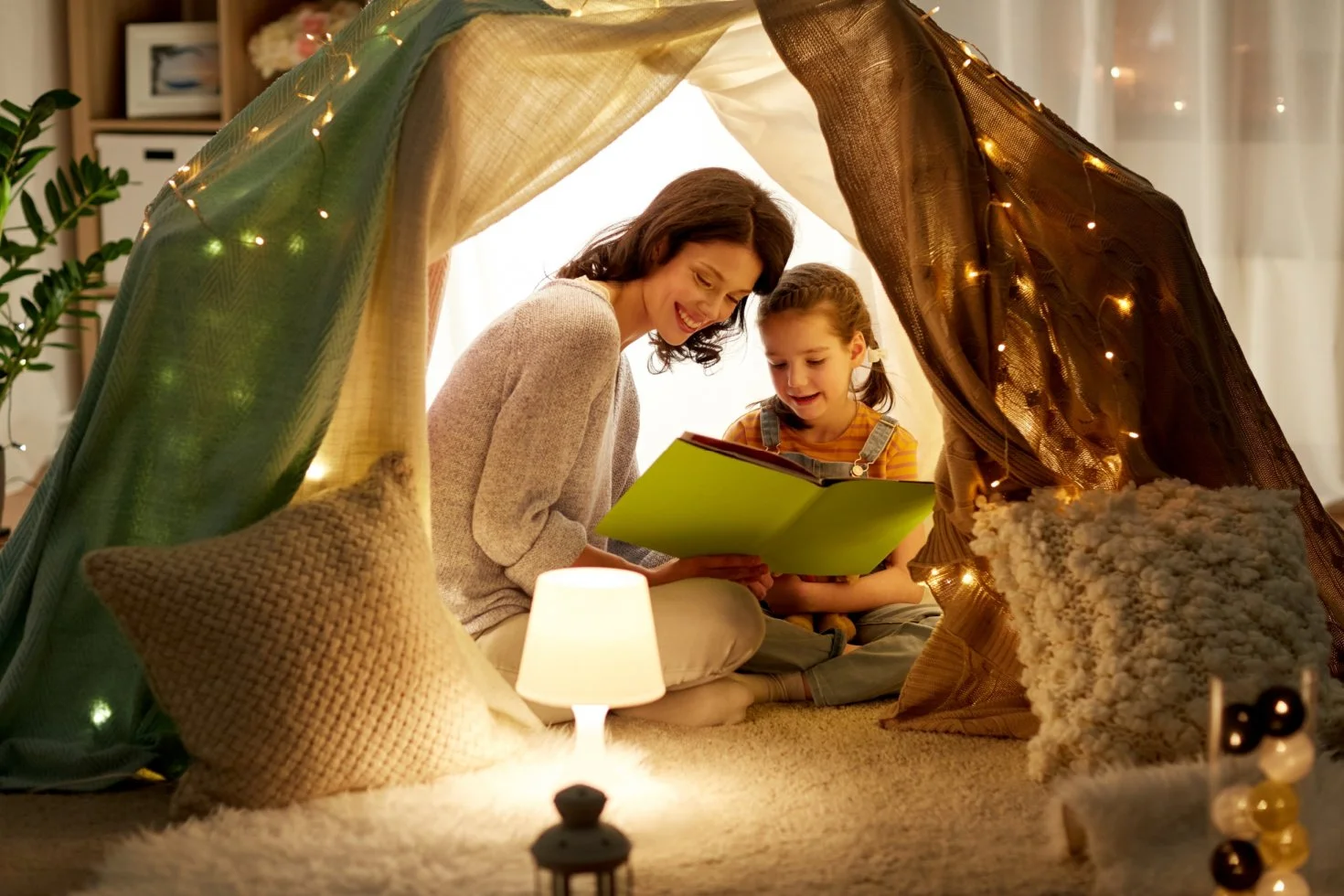The Beauty of a Slow Start to the School Year
The new school year is an exciting, and sometimes overwhelming, time of year.
The Beauty of a Slow Start
When we think of the “first day of school,” many of us picture sharpened pencils, crisp notebooks, and a flurry of lessons and activities packed into the schedule. It’s exciting!
But if we’re honest, it can also feel a bit like going from lounging in a hammock to suddenly running a marathon - without so much as a stretch in between.
And that’s not just true for our children. As parents, we feel the weight of this seasonal shift too. Our kids are learning to release the rhythms of summer while stepping into new ones, and at the same time, we’re holding the invisible threads - schedules, meals, moods, energy levels - while also trying to find our own rhythm again. It’s a lot. It’s hard. And, you’re not doing anything wrong.
That’s why I’ve always loved the idea of a slow start to the school year. Rather than jumping straight into a full load of lessons and activities on day one, we give ourselves (and our children) space to ease in. This approach isn’t just kinder to everyone’s nerves - it also happens to align beautifully with both Waldorf rhythms and modern science.
How can you make your daily routine a bit more gentle?
Why Gentle Transitions Support the Nervous System
Transitions are tricky. Even happy changes -like beginning a new grade - ask our nervous systems to adjust. When we add too many changes at once, children (and parents!) can slip into “fight or flight” mode, which is not exactly the best state for joyful learning.
By starting slowly - adding one or two elements at a time - we give the nervous system a chance to stay regulated. Children feel secure, parents feel less frazzled, and the household atmosphere stays more harmonious. (And let’s be honest: fewer meltdowns are always a win.)
Research tells us that habits stick best when introduced gradually. Instead of overhauling everything on One Big Monday Morning, layering in small changes helps new rhythms take root.
A Waldorf Perspective on Rhythm
In Waldorf education, rhythm is central. Breathing in and breathing out, balancing activity with rest, honoring the flow of the seasons - all of this creates a sense of steadiness for children.
Taking time to transition is healthy for the whole family.
A slow start to the school year mirrors this wisdom. We don’t need to hit the gas right away. Instead, we can begin with simple songs, a morning walk, or a story to set the tone. Lessons and projects can be layered in gradually, like brushstrokes in a painting.
And just as autumn ripens slowly, the festival of Michaelmas at the end of September often feels like a natural settling point. By then, many families discover that their rhythm has gently rooted itself - just in time to celebrate courage and strength in the turning of the year.
Practical Tips for a Slow Start
Here are a few ideas to make this approach simple and doable:
Week 1: Focus on rhythm. Establish your morning circle, enjoy stories, and reconnect with your learning space. Keep lessons light and playful.
Week 2: Add one main lesson subject or block. Keep afternoons simple with nature walks, handwork, or drawing.
Week 3: Gradually layer in more lessons/activities, while keeping an eye on how everyone is adjusting. Flexibility is your friend.
Week 4: Notice how much you’ve already established without the stress of a “big bang” start. Celebrate progress - and maybe bake some bread while you’re at it (bonus points if it’s dragon-shaped for Michaelmas ;)
Parents Benefit Too
We often talk about children’s needs, but parents also have nervous systems that crave gentleness. A slow start gives us space to shift gears - because honestly, the end-of-summer transition can feel bumpy no matter how long we’ve been at this. Easing into the year reduces stress and helps us sustain energy for the long haul. And it reminds our children, by example, that growing into new rhythms is something we all do together, one step at a time.
Slowing down builds a strong foundation- you’ve got this!
A Final Word of Encouragement
If you’re worried that a slow start might end up feeling like you’re “behind” in some way - let me reassure you: you’re not. You’re actually laying a stronger foundation for the months to come. The school year is long, and what matters most is creating rhythms that nourish your family rather than drain it.
This seasonal transition is challenging for everyone - kids and parents alike - but just as we’ve done in other times of change, we’ll gradually settle into steadier days and familiar rhythms.
So this September, consider giving yourself permission to slow down. Notice how the seasonal shift happens little by little, not all at once. Your homeschool year can unfold the same way - with steadiness, warmth, and maybe even a little more joy.
(And if anyone asks why you’re taking things slowly, just smile and say you’re giving your family the gift of nervous system regulation. That’ll either impress them… or end the conversation quickly. Win-win ;)
About the Author
Robyn Beaufoy is Waldorfish’s CEO, and a course instructor for some of our courses - Waldorf Art for Beginners, Weekly Art Foundations, and Simple Season. You’ll find her intuitive touches and influences throughout everything Waldorfish offers! Robyn has been in the world of education for over 25 years, with an MA in Education and a certification in Waldorf teaching - she also homeschooled both of her children. In 2012 Robyn co-founded Waldorfish.com, creating it with the vision of making Waldorf inspired-art and pedagogy more accessible, joyful, and doable for homeschoolers all over the world.




